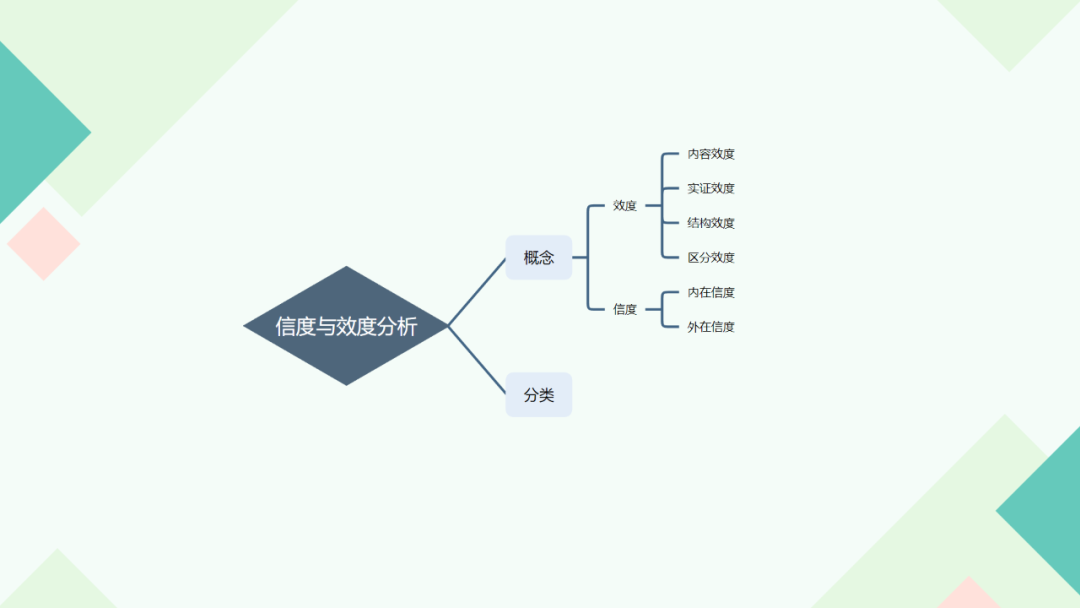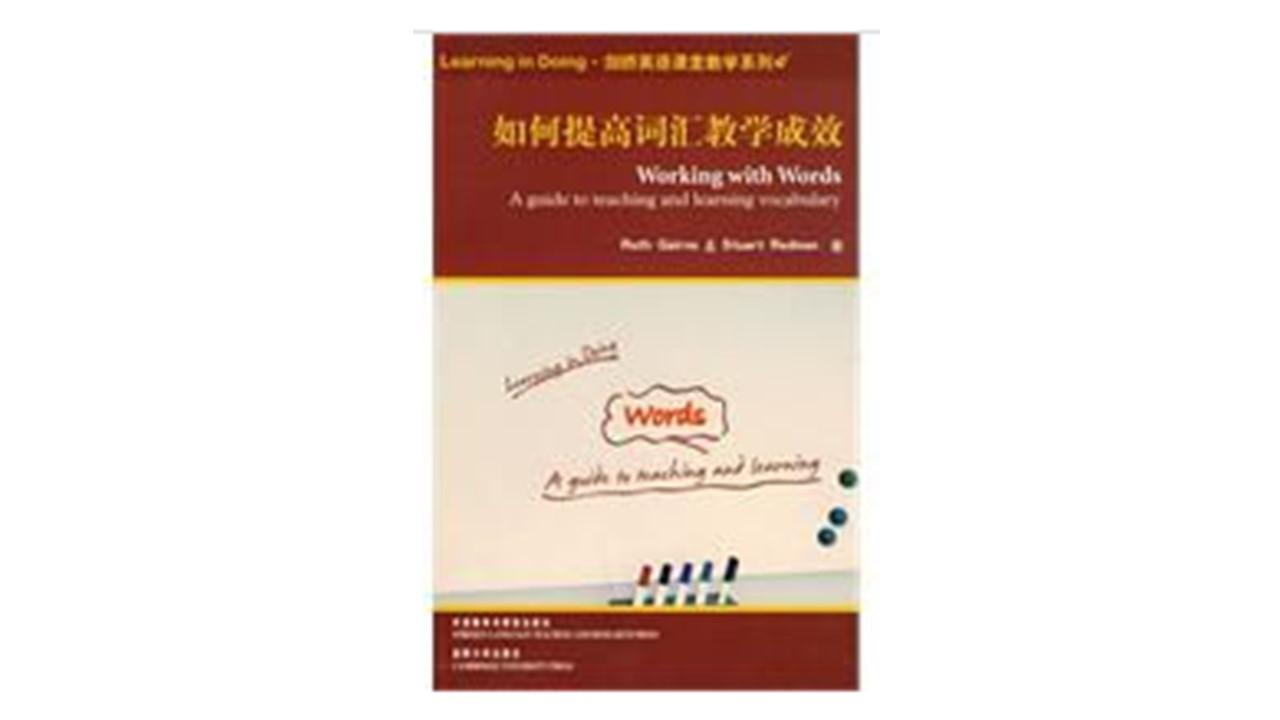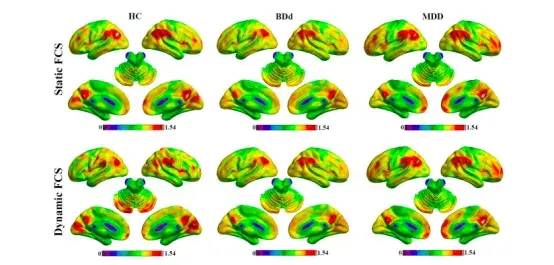Yi Shuo School District (46) SPSS Statistical Analysis (56) Validity

【思维导图】

“分享兴趣,传播快乐,增长见闻,留下美好!大家好,这里是小编。欢迎大家继续访问学苑内容,我们将竭诚为您带来更多更好的内容分享。
“Share interests, spread happiness, increase knowledge and leave beauty! Hello everyone, this is Xiaobian. Welcome to continue to visit the content of the academy, and we will bring you more and better content sharing wholeheartedly.
在分析问题时,我们常借助于量表或问卷进行。量表是否能测得所需的测量结果?测量结果的可靠性如何?需要对量表的效度、信度进行分析。
When analyzing problems, we often use scales or questionnaires. Can the scale measure the required measurement results? What is the reliability of the measurement results? It is necessary to analyze the validity and reliability of the scale.
【基本概念】
效度(Vaildity)是指量表是否真实反映了我们希望测量的问题。例如,智商测验是否真正反映了智商的高低?生存质量调查是否真正反映了人们的生存质量?抑郁量表调查是否真正反映了人们的抑郁程度?这些都是关于效度的问题。对于效度,我们没有绝对准确的答案,尽管不可能证明效度,但是可以用一些指标来评价效度。一般来说有,4个种类的效度,内容效度,实证效度,结构效度和区分效度。内容效度是一种基于概念的评价指标,其他三种效度是基于经验的评价指标。如果一个量表实际上是有效的,那么我们希望上述4种指标都比较满意。一般使用的效度评估方法主要有判断法和实证法,前者着重于测量特性与质的评估。通常依赖研究者对数据的主观判断,实证法则根据具体客观的量化指标来进行效度的评估,进行实证效度评估的统计方法有:相关分析,多元回归分析,因此分析,结构方程等。
Validity refers to whether the scale truly reflects the problems we want to measure。 For example, do IQ tests really reflect IQ? Does the quality of life survey really reflect people's quality of life? Does the Depression Scale survey really reflect people's depression? These are all questions about validity。 For validity, we have no absolutely accurate answer。 Although it is impossible to prove validity, some indicators can be used to evaluate validity。 Generally speaking, there are four kinds of validity: content validity, empirical validity, structure validity and discrimination validity。
Content validity is a concept-based evaluation index, while the other three validity indexes are experience-based evaluation indexes。 If a scale is actually valid, then we hope that all the above four indicators are satisfactory。Generally used validity evaluation methods mainly include judgment method and empirical method。 The former focuses on measuring characteristics and quality evaluation。 Usually relying on the subjective judgment of researchers on data, empirical law evaluates validity according to specific and objective quantitative indicators。 Statistical methods for empirical validity evaluation include correlation analysis, multiple regression analysis, hence analysis, structural equation and so on。
信度(Reliability Analysis)是指测量的一致性。例如,准备调查你的年收入,你第1次回答是2万元,如果能够消除你对问题和答案的记忆,过一段时间后问你一个问同一个问题(当然也可以通过调查其他人了解你的年收入情况),通过考察你(你们)对同一问题的多次回答,可以判断答案的一致性如何。答案的波动越大,信度越低;答案的一致性越好,信度越高。信度本身和测量所得结果正确与否无关,它的功能在于检验测量本身是否稳定,制作完成一份量表或问卷后,首先应该对该量表进行信度分析,确保其可靠性和稳定性,以免影响问卷内容分析结果的准确性。
Reliability Analysis refers to the consistency of measurement. For example, if you are going to investigate your annual income, your first answer is 20,000 yuan. If you can erase your memory of questions and answers, ask you the same question after a period of time (of course, you can also find out your annual income by investigating other people). By examining your multiple answers to the same question, you can judge how consistent the answers are. The greater the fluctuation of the answer, the lower the reliability; The better the consistency of the answers, the higher the reliability.Reliability itself has nothing to do with the accuracy of the measurement results. Its function is to test whether the measurement itself is stable. After making a scale or questionnaire, we should first analyze the reliability of the scale to ensure its reliability and stability, so as not to affect the accuracy of the questionnaire content analysis results.
根据测试时间和测试内容,信度又可分为内在信度和外在信度,内在信度是指一组问题(也可以称为题项)是否测量同一个概念,即这些问题的内在一致性如何,能否稳定的衡量这一概念,最常用的检测方法是Cronbach系数;而外在信度是指对相同测试者在不同时间测得的结果是否一致,重测信度是外在信度最常用的检验法。
According to the test time and test content, reliability can be divided into internal reliability and external reliability. Internal reliability refers to whether a group of questions (also known as questions) measure the same concept, that is, how consistent these questions are and whether they can measure this concept stably. The most commonly used detection method is Cronbach coefficient; External reliability refers to whether the results measured by the same tester are consistent at different times, and test-retest reliability is the most commonly used test method of external reliability.
效度与信度的关系是,信度为效度的必要而非充分条件,即有效度一定有信度,但有信度不一定有效度。
The relationship between validity and reliability is that reliability is a necessary but not sufficient condition of validity, that is, validity must have reliability, but reliability does not necessarily have validity.
下期预告:本期,我们学习了信度分析的理论基础。下一期,我们将会学习内在信度信度分析的基础知识。
如果您对今天的文章有独特的想法,欢迎给我们留言,让我们相约明天,祝您今天过得开心快乐!
参考资料:《SPSS23(中文版)统计分析实用教程》、百度百科
翻译:讯飞语音
限 时 特 惠: 本站每日持续更新海量各大内部创业教程,一年会员只需98元,全站资源免费下载 点击查看详情
站 长 微 信: lzxmw777






